I must admit, I’m not a big fan of baked custard. But stovetop custard is like pudding’s silkier cousin. And it’s much easier to make than you might think! This dairy-free custard recipe does away with the fussy tempering. It’s a simple whisk and go-style that yields the same results delicious as traditional methods, but with less margin for error. You can enjoy it as a simple dessert on its own, or as a component in a more elaborate dessert.
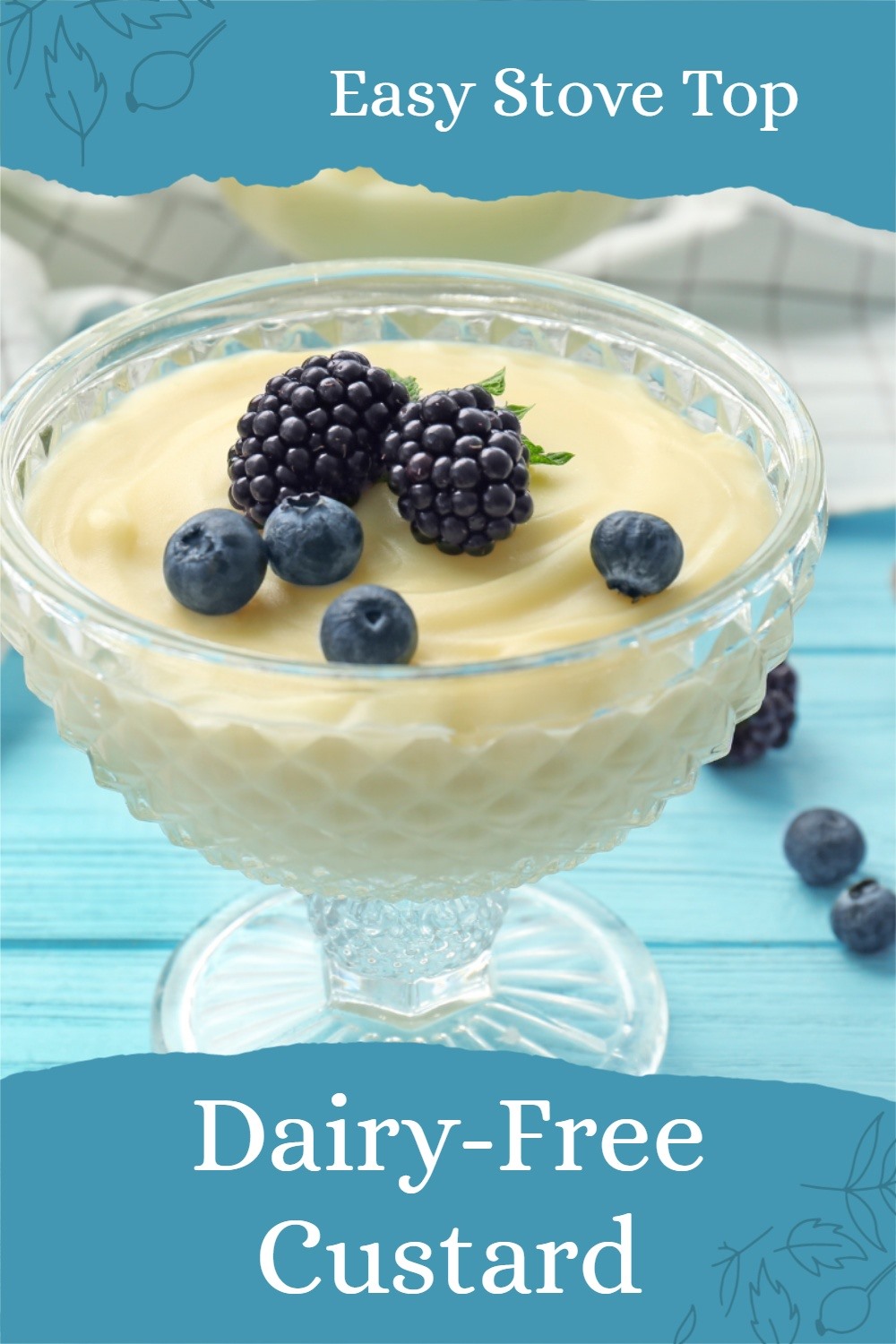
Easy Dairy-Free Custard made on the Stovetop in Minutes!
The recipe is easy, but I’m sure you have a few questions. I’ve done my best to answer any top concerns in this section, and you can find more options in the Notes of the dairy-free custard recipe below.
Wait, Don’t the Eggs Need to Be Tempered?
Tempering is one of those customary things that people get used to doing, and then assume it always needs to be done. Tempering is required when you are adding eggs to hot liquid. You slowly add a little of hot liquid into the eggs, whisking constantly, in attempt to avoid scrambling them (it still happens sometimes!). But this tricky step is only needed when you must heat the liquid in advance for some reason. For example, if you want to infuse vanilla bean into the liquid by simmering it for a little while.
If you’re using vanilla extract or paste, or don’t need a long infusion, you can simply whisk the unheated milk alternative, egg, sugar, starch, and salt together, and then place the pan over the heat. It works perfectly. It’s important to continuously whisk as it heats, but it comes together rather quickly. And believe it or not, heating the eggs and starch together actually helps ensure proper thickening with smooth results.
Isn’t Starch for Pudding?
Technically, traditional custard uses only eggs for thickening, and is either baked to set, or made on the stovetop. The stovetop custard is creme anglaise, and it’s a runnier, pourable custard. Stovetop custard that’s thickened with starch or flour is usually referred to as pastry cream. But for a thicker stovetop custard that you can eat as a stand alone dessert, starch or flour is also needed.
It might not be the most traditional method, but people around the world have been using starch to thicken custard for generations. It isn’t a new or unheard of thing. In fact, Bird’s Custard Powder is basically cornstarch and flavoring. This instant blend was first marketed in England in 1844, and has since become a household name.
Is Egg Required?
Egg does give it the telltale custard taste. If you omit the egg, your dairy-free custard won’t thicken quite as much, and it will taste like vanilla pudding. Not a bad thing, but not like custard. You can use Bird’s custard powder, an English tradition, which is egg-free and vegan. As mentioned above, it’s essentially cornstarch, salt, and custard flavor. If you confuse eggs with dairy, you’re not alone! See this post: Are Eggs Dairy?
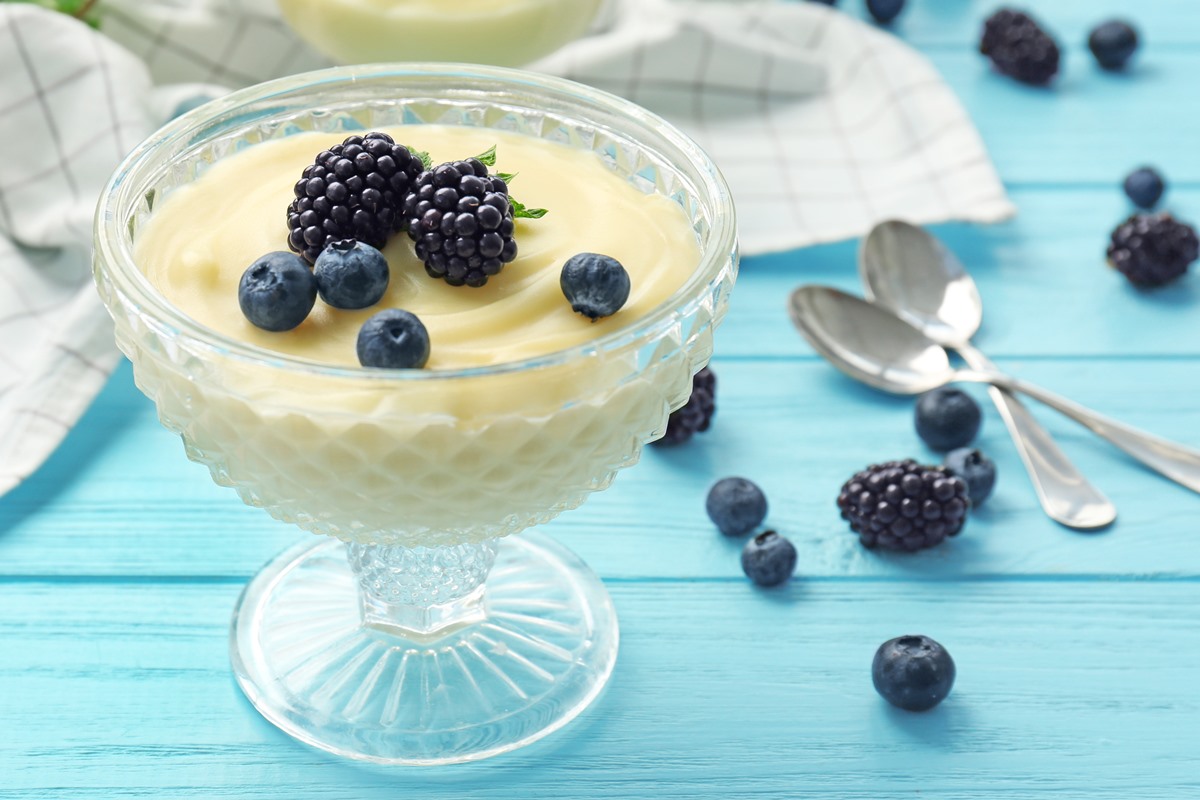
Special Diet Notes: Easy Dairy-Free Custard
By ingredients, this recipe is dairy-free / non-dairy, gluten-free, nut-free, peanut-free, optionally soy-free, and vegetarian. You can make it paleo-friendly with the lite coconut milk and with a paleo-friendly sweetener.
- 1 egg
- 2 tablespoons sugar (increase to 3 tablespoons for a sweet custard)
- 1 tablespoon non-GMO cornstarch
- Pinch salt
- 1 cup cold unsweetened soymilk or lite canned coconut milk
- ¾ teaspoon vanilla extract, or to taste
- In a saucepan, whisk together the egg, sugar, and salt until the sugar dissolves.
- Add the starch, and about ¼ cup of the milk alternative. Whisk until the starch is dissolved. Whisk in the rest of the milk alternative.
- Place the pan over medium heat, and cook, while whisking, until the mixture begins to steam. Try not to let it boil. Turn the heat down to medium low (or low if needed) and continue whisking or stirring until the mixture thickens enough to coat the back of a spoon, about 5 to 10 minutes.
- Remove the pan from the heat, and whisk in the vanilla extract.
- Let the custard cool for a few minutes and serve, or pour it into a container and cool completely before covering and refrigerating. If you do not let the custard cool to room temperature before covering, it will break the custard down.
Sweetener Options: Simple cane sugar produces the "cleanest" taste. You can substitute another sweetener, like maple syrup or honey, but it does heavily influence the flavor. We have not tested this recipe with a sugar-free substitute. They do tend to perform differently in recipes.
Milk Alternatives: You can use another dairy-free milk beverage, but keep in mind that the results might be thinner, and some brands and types can curdle. I prefer a two-ingredient soymilk (soy and water) with no added thickeners or other ingredients (like WestSoy or Trader Joe's) or a simple lite canned coconut milk.
Starch Options: Cornstarch is ideal for dairy-free custard. But if you need corn-free, you can substitute arrowroot starch. If you prefer to use flour, double the amount - use 2 tablespoons.

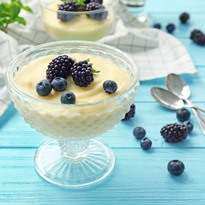
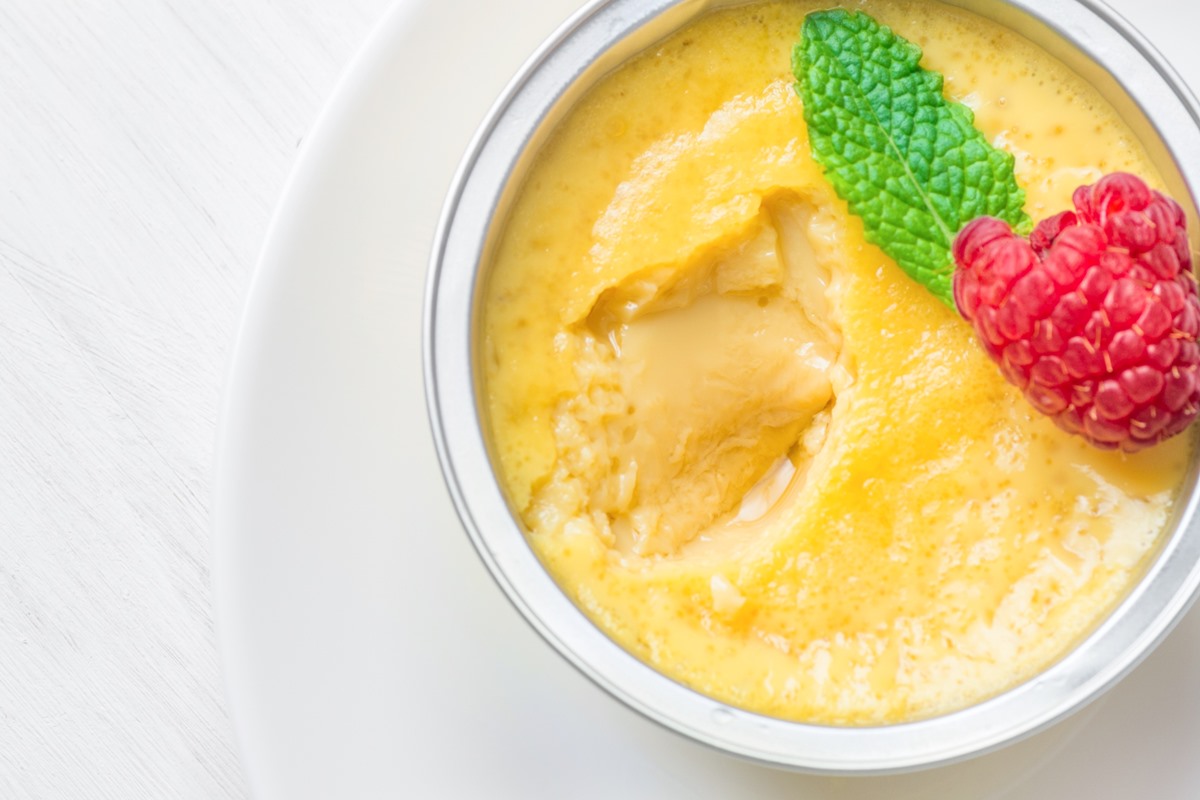
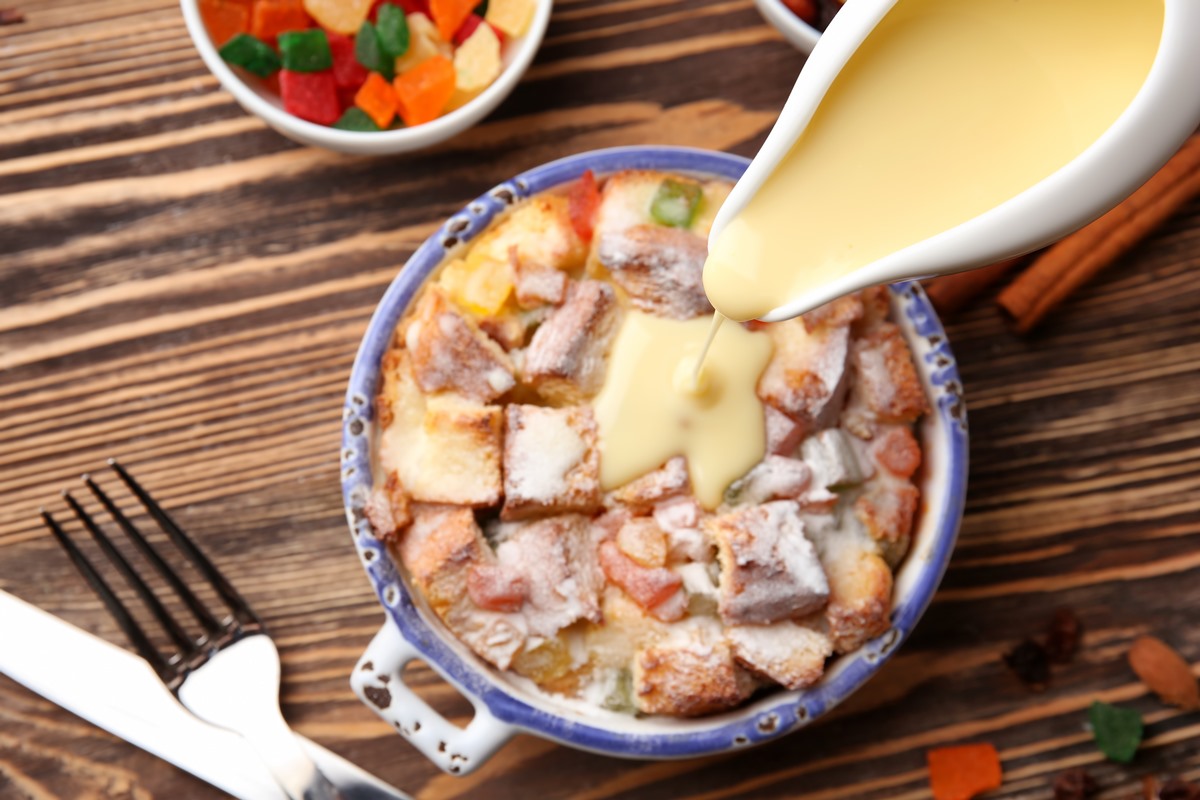
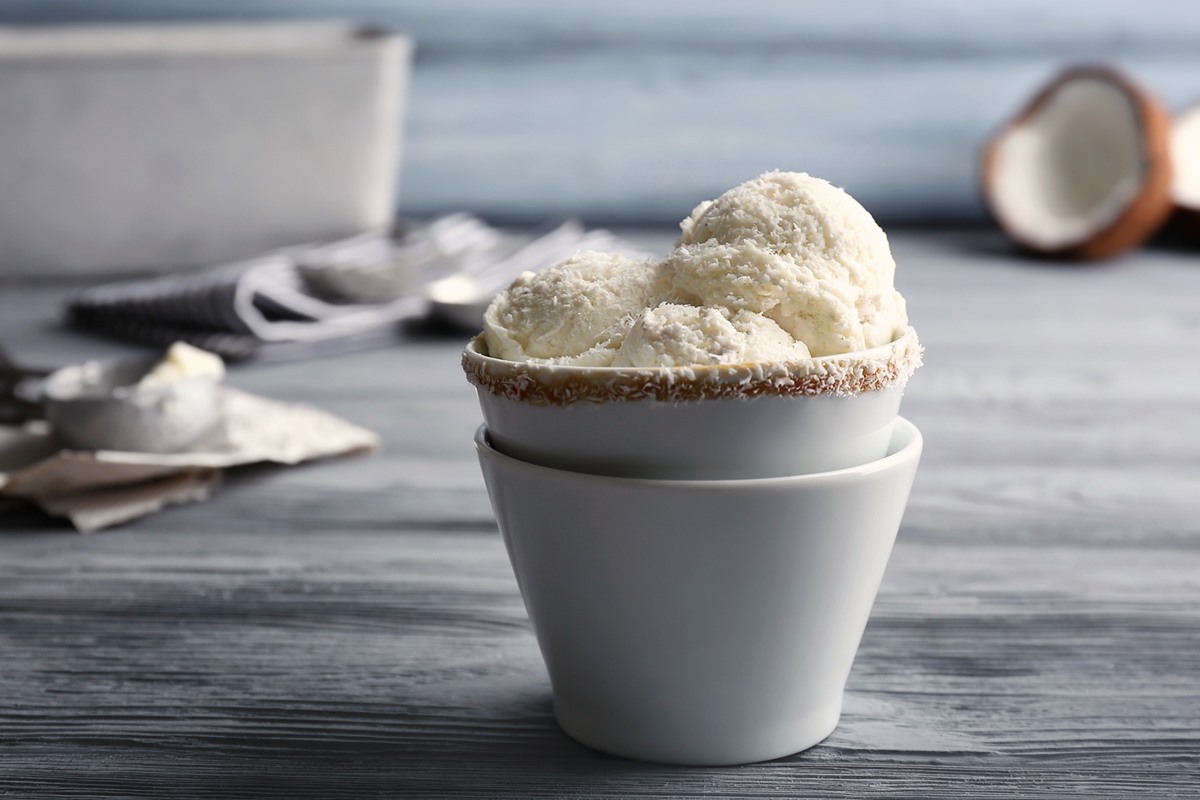
23 Comments
Hi. I love this recipe. I tried it with oatmilk this time and it didn’t set. Is there a way to reheat, add more starch, whatever?
Thanks,
Julia
I’m sorry it didn’t work out for you Julia. Oat milk is finicky and the brands are different. Place about a tablespoon starch in a small bowl and whisk in just a little water (maybe a tablespoon) until smooth. Whisk this into your custard, and heat gently until thickened, while whisking.
Can this be made earlier and re heated when needed
You can definitely make it ahead – see the cooling and refrigeration directions. But it is usually served cold or at room temperature at this point. If you opt to reheat, whisk and heat it gently and just until warm on the stove top. If heated too much, it can break down.
I used Almond Milk as I had seen another recipe using it and tapioca flour (of course I can’t find the recipe now that I’ve gone to make it haha! Anyway, it hasn’t really set properly. Any tips?
Almond milk would require more thickener. Did you use tapioca flour or tapioca starch?
Thank you for this. I used canned coconut milk (full fat) for the liquid, and tapioca flour/starch. The two tablespoons of sugar is the perfect sweetness for someone who avoids sweets. It was delicious.
So glad you enjoyed it and thanks for your feedback Kate!
I just made this recipe with unsweetened oat milk (Chobani extra creamy) and it was perfect! I should have doubled it! This will be a regular in my house now, thank you (:
So glad you enjoyed it Alexa and thank you for sharing which milk alternative you tried it with!
This never set up for me but it’s my fault (used the wrong starch). The flavor is great and it’s a great recipe, I’m definitely trying again with proper starch (thickener). Thanks!
I was hoping to use your recipe here for the custard part of the dessert I’m dreaming up. I was hoping to use a cookie crust in a springform pan, pour/put your custard in next and then top with Meringue that I would then put in the oven at 350 for 12 or so minutes. So, wondering if your custard will do ok being put in the oven for that time and if it will hold together when I cut the slices. I don’t mind if it runs out a little bit when serving but don’t want it to completely fall apart.
Thank you for you input!
Sarah
Hmm, that’s a good question Sarah. I generally use starch-based fillings for no-bake pies, since starch can break down under prolonged heat, causing it to thin. It might work, but I’m hesitant. The two things I might try instead are using the flour alternative, or going with full fat coconut milk instead of milk. I might skip the starch if using full fat coconut milk. Once baked, cooled, and then refrigerated (for several hours), it should set up. I don’t want to make any guarantees though, since I haven’t tested it!
Thank you so much! Worth a try. I’ll let you know
Hi my Grandson is dairy and soya intolerant so looking for some ideas to give him a nice change at Christmas so making a Trifle. This recipe sounds great but would have to leave out the soy. Will that be ok
Hi Janet, the recipe calls for soymilk or lite canned coconut milk. I would use the coconut option for soy-free. I haven’t tested it with other milk alternatives. If you only have full-fat canned coconut milk, you can use 1/2 coconut milk, 1/2 water.
Ive never put cornflour in a recipe without blanching it first. It went extremely lumpy. I had to use the stick blender to get the lumps out
I’m not quite sure what you mean. Cornstarch dissolves in cold liquid. Use cold ingredients and whisk until it dissolves. It must be dissolved before heating, or it will be lumpy. This is standard. As long as you whisk while the mixture heats, it will not be lumpy.
Have never attempted to make custard from scratch but wanted a dairy free custard for a trifle so tried this recipe.p and was so easy.
I used 4 egg yolks and 2 eggs so 4 times quantity. I multiplied everything up but only used 2 tsps vanilla essence as thought flavour would be too strong.
Left to cool as suggested and added to trifle. Lovely texture and flavour and so easy to make.
Will definitely use again.
I’m happy to hear your trifle worked out well Carole! Thank you for the feedback.
This look great, Alisa!
I’ve only gotten rid of dairy recently, and was already out of options to make. Surely going to try this over the weekend and let you know how it was. Thank you!
I’m about to make this and trying to avoid a trip to the grocery store, so wondering about making it using coconut milk + oatmilk (as a previous commenter had used) 🤔 … I’m throwing caution to the wind and trying it!🤞
Please let us know how it works out for you Breena – I hope deliciously!